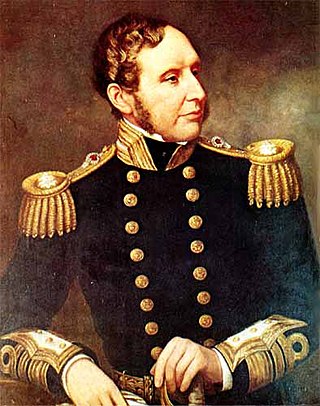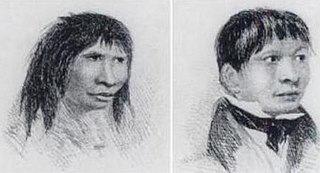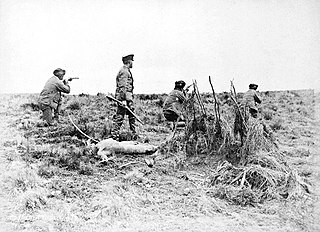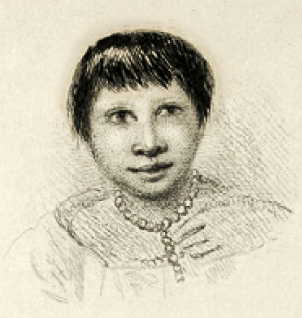
Tierra del Fuego is an archipelago off the southernmost tip of the South American mainland, across the Strait of Magellan.

Vice-Admiral Robert FitzRoy was an English officer of the Royal Navy and a scientist. He achieved lasting fame as the captain of HMS Beagle during Charles Darwin's famous voyage, FitzRoy's second expedition to Tierra del Fuego and the Southern Cone.

Tierra del Fuego, officially the Province of Tierra del Fuego, Antarctica and South Atlantic Islands, is the southernmost, smallest, and least populous Argentine province. The provincial capital city is Ushuaia, from a native word meaning "bay towards the end".
Keppel Island is one of the Falkland Islands, lying between Saunders and Pebble islands, and near Golding Island to the north of West Falkland on Keppel Sound. It has an area of 3,626 hectares and its highest point, Mt. Keppel, is 341 metres (1,119 ft) high. There is a wide, flat valley in the centre of the island with several freshwater lakes. The central valley rises steeply to the south-west, west and north. The north-east is low-lying, with a deeply indented coastline.

Beagle Channel is a strait in the Tierra del Fuego Archipelago, on the extreme southern tip of South America between Chile and Argentina. The channel separates the larger main island of Isla Grande de Tierra del Fuego from various smaller islands including the islands of Picton, Lennox and Nueva; Navarino; Hoste; Londonderry; and Stewart. The channel's eastern area forms part of the border between Chile and Argentina and the western area is entirely within Chile.

Orundellico, known as "Jeremy Button" or "Jemmy Button" or "Jimmy Button", was a member of the Yaghan people from islands around Tierra del Fuego in modern Chile and Argentina. He was taken to England by Captain FitzRoy in HMS Beagle and became a celebrity there for a period.

The Selk'nam, also known as the Onawo or Ona people, are an indigenous people in the Patagonian region of southern Argentina and Chile, including the Tierra del Fuego islands. They were one of the last native groups in South America to be encountered by migrant Europeans in the late 19th century. In the mid-19th century, there were about 4,000 Selk'nam; in 1916 Charles W. Furlong estimated there were about 800 Selk'nam living in Tierra del Fuego; with Walter Gardini stating that by 1919 there were 279, and by 1930 just over 100.

The Yahgan are a group of indigenous peoples in the Southern Cone of South America. Their traditional territory includes the islands south of Isla Grande de Tierra del Fuego, extending their presence into Cape Horn, making them the world's southernmost human population.

Alberto de Agostini National Park is a protected area that was created on January 22, 1965, on land that was formerly part of the "Hollanda" forest reserve and "Hernando de Magallanes National Park". It covers 1,460,000 hectares and includes the Cordillera Darwin mountain range, which is the final land-based stretch of the Andes before it becomes a chain of mountains appearing as small islands that sink into the Pacific Ocean and the Beagle Channel.

Fuegians are the indigenous inhabitants of Tierra del Fuego, at the southern tip of South America. The name has been credited to Captain James Weddell, who supposedly created the term in 1822.

Waite Hockin Stirling was a 19th-century missionary with the Patagonian Missionary Society and was the first Anglican Bishop of the Falkland Islands. He was brother-in-law to Thomas Phinn. He was also a grandnephew of Sir Thomas Stirling, 5th Baronet of Ardoch.

Allen Francis Gardiner was a British missionary and Royal Navy officer.

Bahia Wulaia is a bay on the western shore of Isla Navarino along the Murray Channel in extreme southern Chile. The island and adjacent strait are part of the commune of Cabo de Hornos in the Antártica Chilena Province, which is part of the Magallanes and Antartica Chilena Region.

William Parker Snow was an Arctic explorer, writer and mariner. He wrote several books on his expeditions including the Voyage of the Prince Albert under Sir John Franklin. He served as captain on the Allen Gardiner on its voyage to Patagonia in 1855.

The Selk'nam genocide was the systematic extermination of the Selk'nam people, one of the four indigenous peoples of Tierra del Fuego archipelago, in the late 19th and early 20th centuries. Historians estimate that the genocide spanned a period of between ten and twenty years, and resulted in the decline of the Selk'nam population from approximately 4,000 people during the 1880s to a few hundred by the early 1900s.

Allen Gardiner was a schooner owned by the South American Mission Society, based in England. Built in 1854, the schooner was named after Captain Allen Gardiner, the founder of the society. He had died of starvation with the rest of his mission party at Spaniard Bay on the SE coast of the main island of Tierra del Fuego in 1852, after resupply was delayed.

Thomas Bridges was an Anglican missionary and linguist, the first to set up a successful mission to the indigenous peoples in Tierra del Fuego, an archipelago shared by Argentina and Chile. Adopted and raised in England by George Pakenham Despard, he accompanied his father to Chile with the Patagonian Missionary Society. After an attack by indigenous people, in 1869 Bridges' father, Despard, left the mission at Keppel Island of the Falkland Islands, to return with his family to England. At the age of 17, Bridges stayed with the mission as its new superintendent. In the late 1860s, he worked to set up a mission at what is now the town of Ushuaia along the southern shore of Tierra del Fuego Island.

The Fuegian dog, or Yahgan dog, or Patagonian dog, is an extinct type of canid. In comparison to the domestic dog's ancient wolf ancestry, the Fuegian dog was traditionally thought to be bred and domesticated from the South American culpeo, also known as the culpeo fox. However, 2023 research suggested that the traditional accounts of the Fuegian dog were in fact two different animals. The culpeo itself is similar to true foxes, though it is closer, genetically, to wolves, coyotes and jackals ; thus it is placed in a separate genus within the South American foxes or zorros.

This Thing of Darkness was the debut novel of Harry Thompson, published in 2005 only months before his death in November of that year at the age of 45. Set in the period from 1828 to 1865, it is a historical novel telling the fictionalised biography of Robert FitzRoy, who was given command of HMS Beagle halfway through her first voyage. He subsequently captained her during the vessel’s famous second voyage, on which Charles Darwin travelled as his companion.

Yokcushlu was a Kawésqar woman from the western Tierra del Fuego. In 1830, at the age of nine, she was taken hostage by the crew of the British vessel HMS Beagle and renamed "Fuegia Basket". Robert FitzRoy, captain of the Beagle, initially intended to trade her for a stolen boat. He later decided to take her and three other Fuegians, "York Minster", "Boat Memory", and "Jemmy Button", to England where they could be educated and taught Christianity so that they might return to "civilise" their people and serve as interpreters for the British.



















